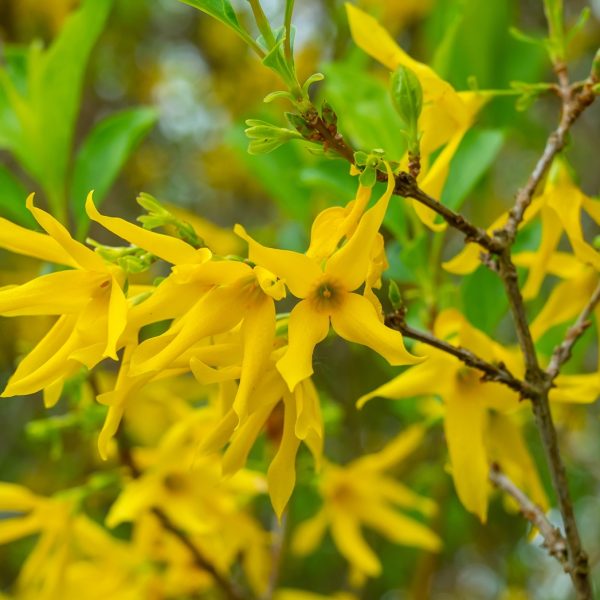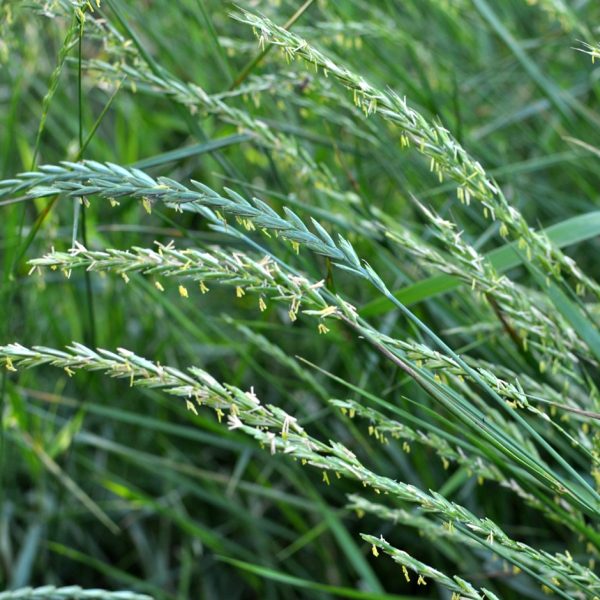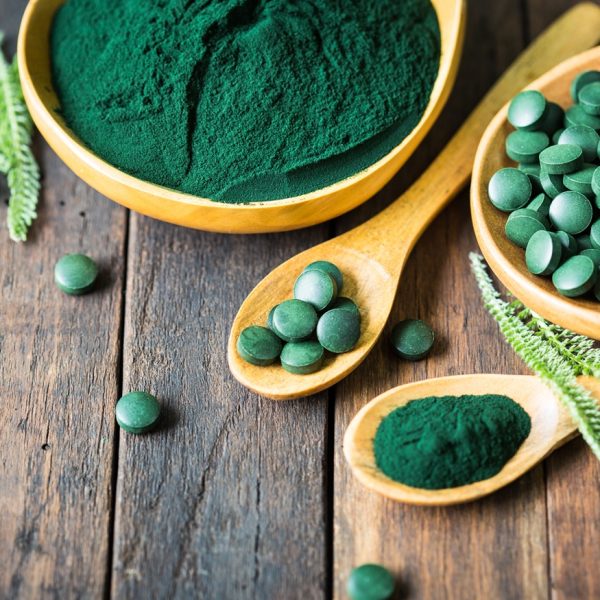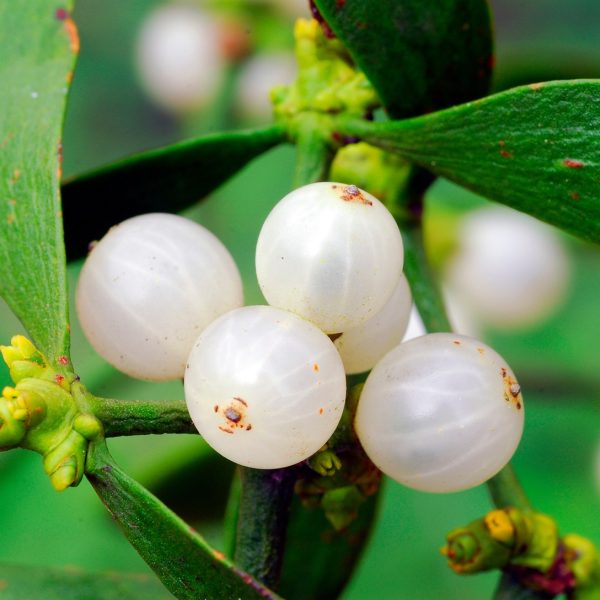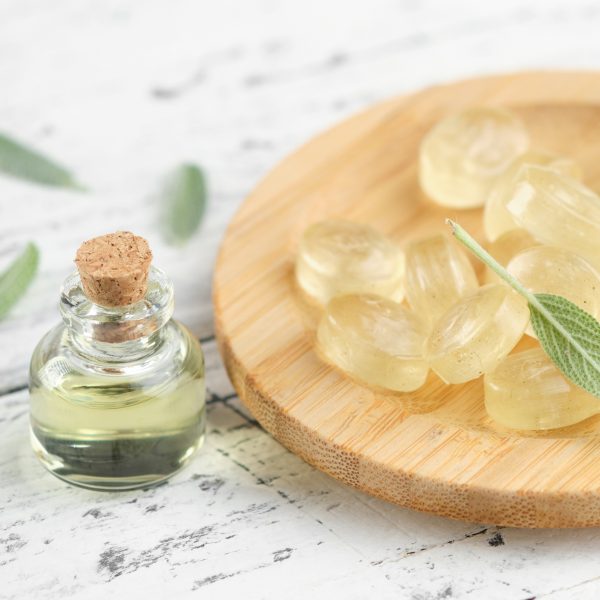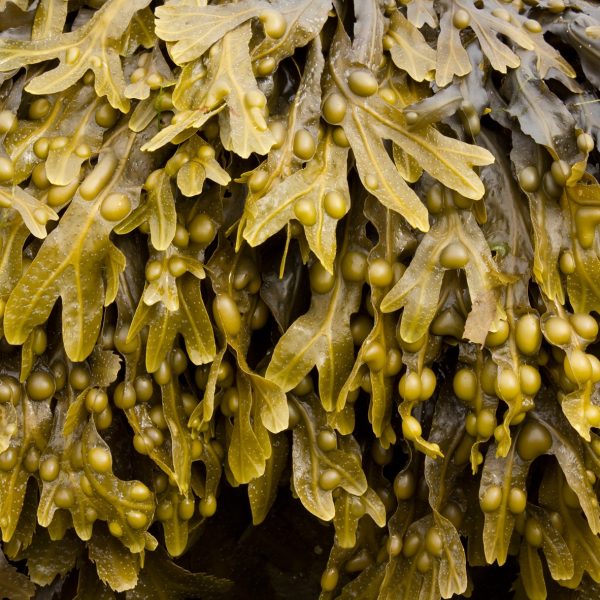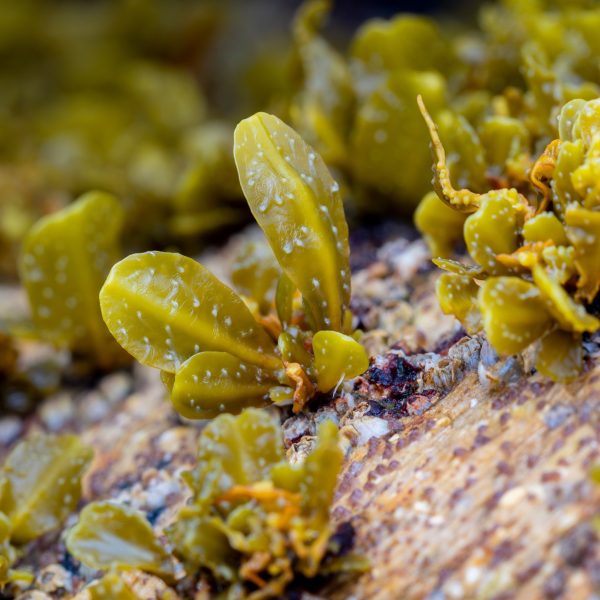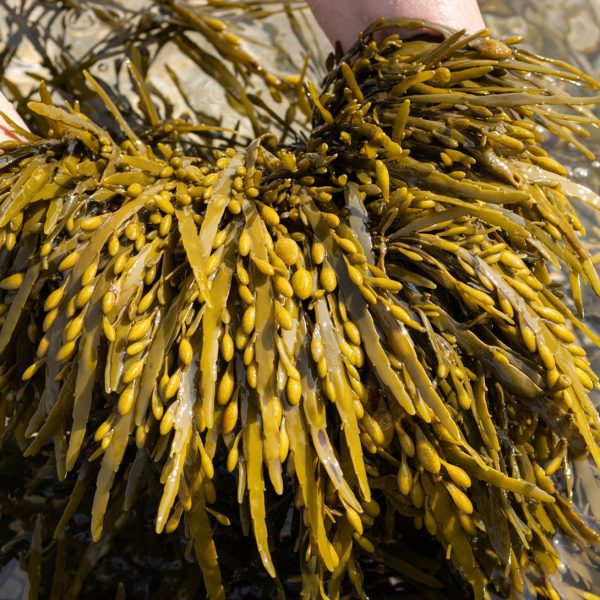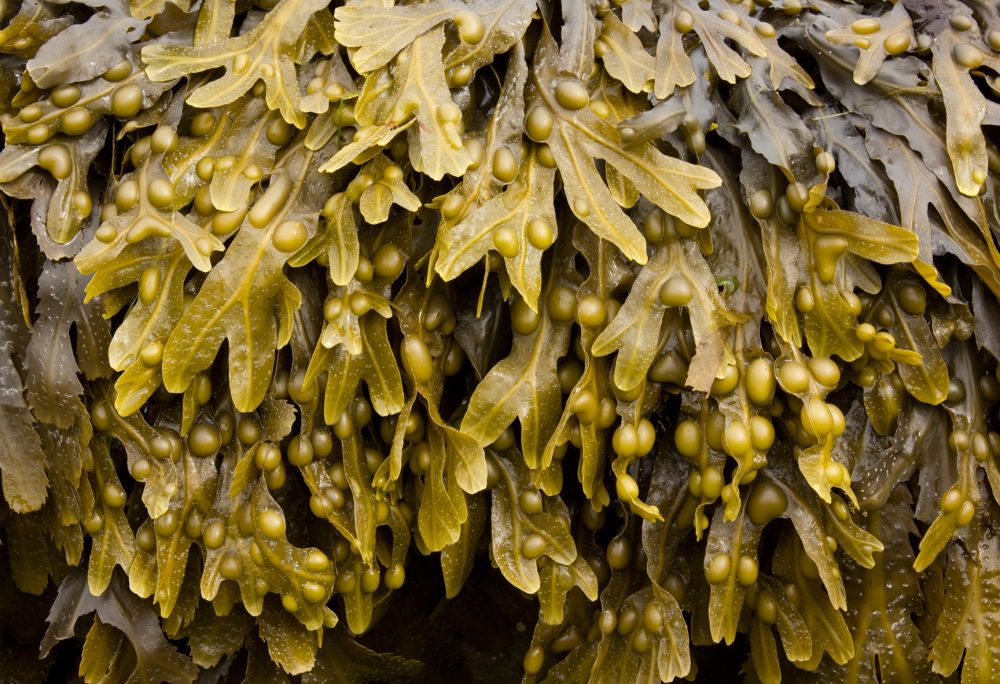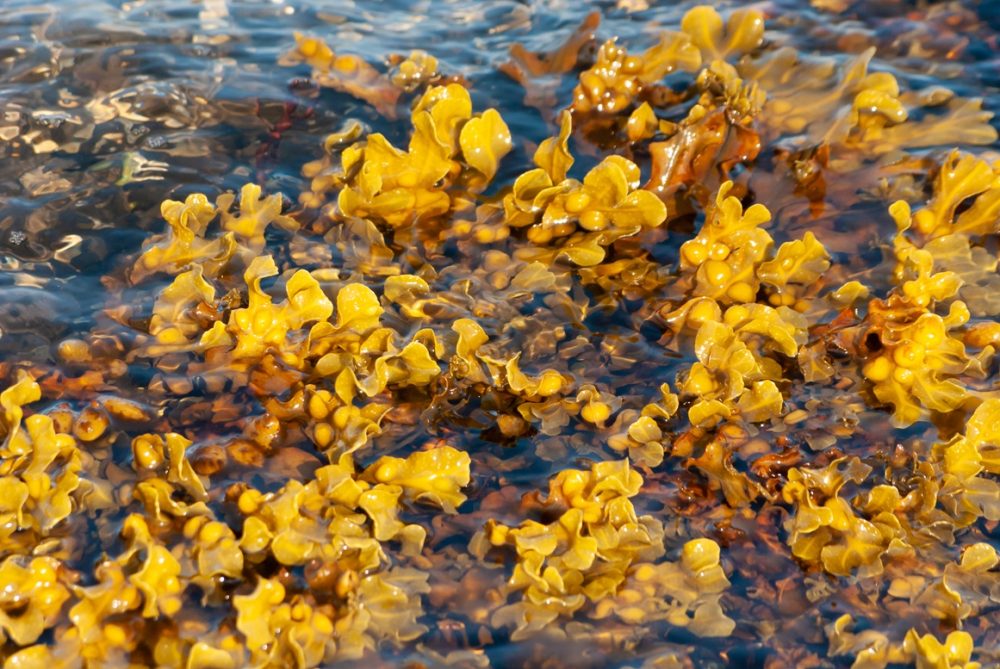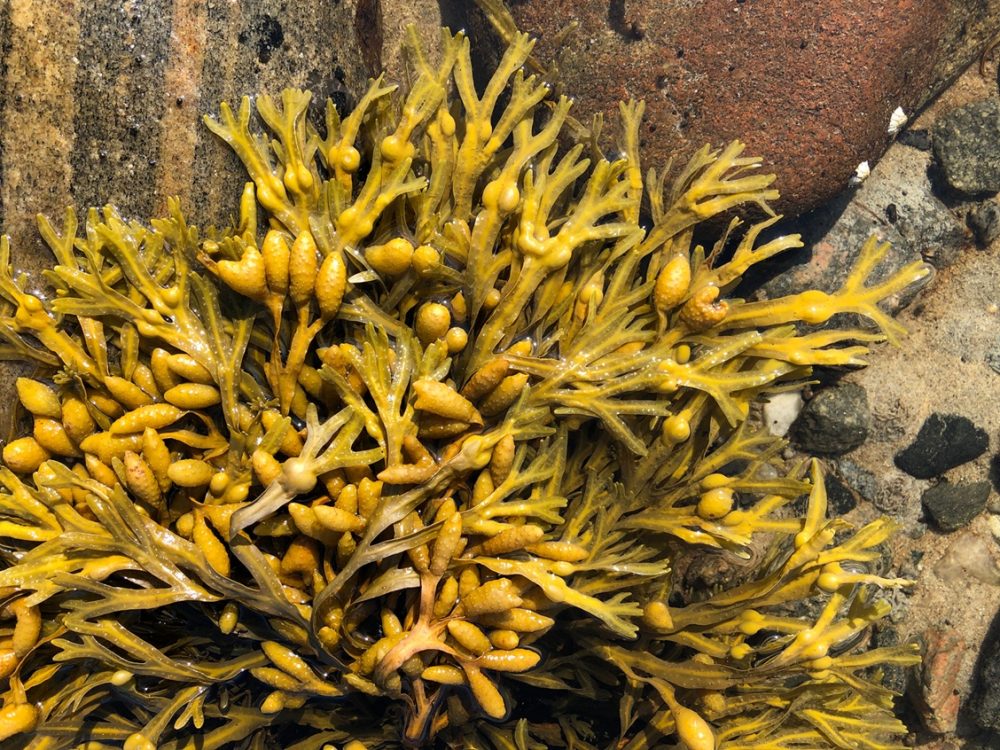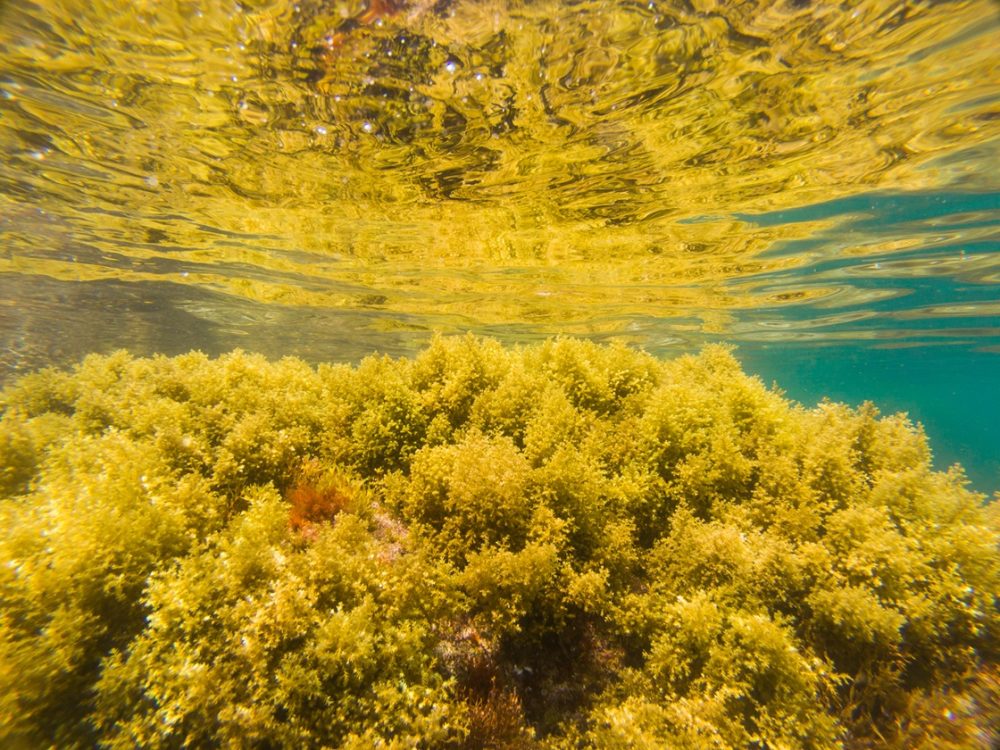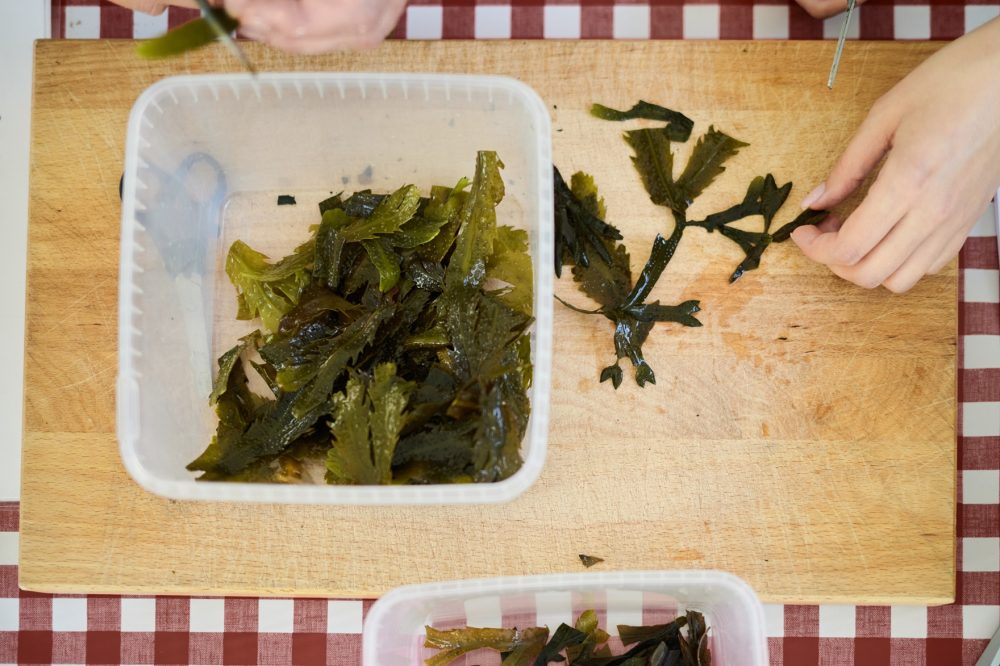-
How does it feel?
The vibrance and potency of bladderwrack’s sea aroma in its slippery fresh form is in stark contrast to the hard, brittle, shrunken black form, adorned only lightly with a white incrustation, that it becomes once dried (1). In the mouth, the initial sensation of saltiness is quickly complimented by a growing awareness of umami, enhancing flavours, promoting appetite, increasing salivation and supporting digestion (2).
-
What can I use it for?

Bladderwrack (Fucus vesiculosus) Bladderwrack can be used to support thyroid function when underactivity of this endocrine gland is caused by an underlying iodine deficiency as a result of insufficient dietary intake (3, 4). Since the widespread introduction of iodised salt, this cause of low-thyroid activity is seen far less commonly than previously when hypothyroidism and goitre were most frequently observed to occur in inland areas with no easily available dietary sources of iodine such as sea-salt, salt water fish or seaweeds (5).
The current main cause of low-thyroid function is auto-immune conditions such as Hashimoto’s disease, which has been seen to be made worse in some individuals as a result of increased iodine intake (5,6,7). For this reason, it is recommended that anyone experiencing symptoms that may be associated with low thyroid function; such as extreme fatigue, unexplained weight gain, brain fog, increased sensitivity to cold, constipation, low mood and dryness of the skin or hair, consults their medical provider for testing to identify the cause of this and seeks the guidance of an experienced herbal practitioner with regard to whether bladderwrack would be indicated as beneficial specific to the diagnosis and cause of their condition.
Bladderwrack may be used for conditions of the digestive system such as indigestion, acid reflux, GORD and gastritis where its soothing, cooling actions make it an effective remedy due to the presence of the polysaccharide alginic acid, a compound used in many over-the-counter remedies for treating indigestion, such as Gaviscon (3,8,9). It may also be used to relieve the symptoms of rheumatic conditions and arthritis both when taken internally or used as an external compress directly applied to painful or swollen joints (3,10).
-
Into the heart of bladderwrack
Bladderwrack is considered to be a herb of protection, particularly for those whose work takes them out to sea, such as sailors. It has also been seen as symbolic of financial abundance resulting in the custom of keeping a little dried bladderwrack in a purse or hung over the door of a dwelling place (11,12).
Energetically the cool, salty qualities of bladderwrack are particularly indicated where there is depletion, a sense of sluggishness or damp stagnation. It can be a valued ally for those who feel weighed down or out of rhythm with life.
Astrologically bladderwrack is associated with both the moon and Saturn connecting it to nourishment and the tides of life alongside structure, boundaries and restoration.
-
Traditional uses

Bladderwrack (Fucus vesiculosus) There is evidence of bladderwrack having been used medicinally as early as the first century CE when it was included in a medical text from that time, De Materia Medica, written by the Greek physician Dioscorides who recommended it for inflammation and “gouty afflictions” (11).
In European herbalism, its use in the treatment of thyroid conditions has been documented as far back as the 17th century which followed the observation that cases of goitre were rarely seen among populations living along coastlines who regularly consumed seafoods including seaweed (1).
The Eclectic physicians of the US in the 19th century also acknowledged the value of bladderwrack in treating conditions of the thyroid and considered it to be a specific for “….both exophthalmic and uncomplicated goitre….” as well as a remedy to support weight loss (12).
It is described in King’s American Dispensatory, a medical and botanical textbook published in 1898, in which its use for directly promoting weight loss is disputed and any subsequent reduction in weight being deduced to be a result of dietary changes recommended to the patient. It is instead hypothesised to influence the processes of elimination and the glandular system through its alterative action, to tone muscle fibres and reduce fatty degeneration of the heart, properties which were further examined in the later work of 1922 by Harvey Felter, The Eclectic Materia Medica, Pharmacology and Therapeutics (13,14,15).
-
Traditional actions
Herbal actions describe therapeutic changes that occur in the body in response to taking a herb. These actions are used to express how a herb physiologically influences cells, tissues, organs or systems. Clinical observations are traditionally what have defined these actions: an increase in urine output, diuretic; improved wound healing, vulnerary; or a reduction in fever, antipyretic. These descriptors too have become a means to group herbs by their effects on the body — herbs with a nervine action have become the nervines, herbs with a bitter action are the bitters. Recognising herbs as members of these groups provides a preliminary familiarity with their mechanisms from which to then develop an understanding of their affinities and nuance and discern their clinical significance.
-
Traditional energetic actions
Herbal energetics are the descriptions Herbalists have given to plants, mushrooms, lichens, foods, and some minerals based on the direct experience of how they taste, feel, and work in the body. All traditional health systems use these principles to explain how the environment we live in and absorb, impacts our health. Find out more about traditional energetic actions in our article “An introduction to herbal energetics“.
-
What practitioners say
 Endocrine
EndocrineIn times past, low thyroid function and goitre were most commonly caused by a lack of iodine and generally seen in inland areas with no available dietary sources, such as sea-salt, salt water fish or seaweeds (5). Due to its rich mineral content, including iodine, bladderwrack has been seen to be of benefit in the treatment of hypothyroid conditions or goitre caused by iodine deficiency (3,6,10,16). In modern practice, underactive thyroid function is more frequently seen to be a result of autoimmune conditions, such as Hashimoto’s disease or other endocrine disorders (of which some cases have been seen to be exacerbated by excess iodine) (7,13,17). Furthermore, high doses of iodine may reduce the synthesis of hormones by the thyroid gland consequently reducing thyroid function further and resulting in a worsening of symptoms. Consequently, it is recommended to be taken under the guidance of an experienced practitioner in endocrine conditions who may include it if appropriate along with other herbs shown to be of benefit in low thyroid function such as ashwagandha (Withania somnifera), guggul (Commiphora mukul) and black seed (Nigella sativa) (18,19,20).
In addition to the iodine content, the flavonoid constituents of bladderwrack, particularly fucoxanthin, have been seen to be of benefit in the treatment of other endocrine conditions, including type 2 diabetes and metabolic system through modulation the inflammatory responses and supporting metabolism (8,20).
Digestive
The role of bladderwrack in promoting weight loss has been generally considered to be associated with its effects on thyroid gland function and clinical evidence of its benefits in the treatment of obesity is varied (6,10). However, more recent research may indicate a more complex mechanisms of action such as improved insulin receptor response, increased breakdown of fats in white adipose tissue and a decreased expression of genes associated with a tendency towards obesity and accumulation of fat through their effects on appetite regulation, metabolism and body fat storage (7,19,21). Through its action on the digestive system including the inhibition of bile acid absorption, it is also seen to have benefits such as lowering cholesterol and triglycerides contributing towards overall improved health outcomes (3)
Bladderwrack is also a rich source of alginic acid that, along with being a mild appetite suppressant, supports the gut microbiota and has a cooling soothing action on the gastrointestinal tract which, along with other herbs known to have mucous membrane protective or restorative properties such as marshmallow (Althaea officinalis) and liquorice (Glycyrrhiza glabra), may be useful in the treatment of acid reflux, GORD, gastritis and peptic ulcers (3,8,9).
Musculoskeletal
Bladderwrack has traditionally been prescribed for rheumatic conditions including rheumatoid arthritis and may be used both as an internal preparation and applied externally to inflamed joints (4,10,13). Its alterative, nutritive, antioxidant and anti-inflammatory actions have been shown to be of benefit in the treatment of arthritis as well as other inflammatory conditions (3,8,10).
Immune
The antimicrobial, anti-inflammatory, antioxidant, antiangiogenic and antitumour properties of bladderwrack all contribute to its role in supporting immune function. Its antiviral action has been seen to be effective in practice against Herpes simplex virus and shows promising results against HIV in in-vitro testing (3,13). There is also evidence to suggest it may inhibit the growth of some cancer cell lines and it may be used as part of a preventative treatment protocol for individuals at high risk, or in remission from, lymphoma and breast cancer (3,4,8).
-
Research

Bladderwrack (Fucus vesiculosus) Supplementation of elderly Japanese men and women with fucoidan from seaweed increases immune responses to seasonal influenza vaccination
This randomised, double blind placebo-controlled trial from 2013 examined the potential benefits of fucoidan, a polysaccharide constituent found in bladderwrack, in increasing the effectiveness of flu vaccination in the elderly population, a group previously acknowledged to exhibit an inadequate immunological response. Following vaccination with the current seasonal influenza vaccine, the group receiving a fucoidan supplement were seen to have significantly higher levels of antibodies against all three strains of influenza virus contained in the vaccine given when compared with the placebo-control group.
A substantial increase in natural killer cells at around nine weeks was evidenced in the fucoidan supplemented group; in contrast to the control group, within whom no significant increase was seen in natural killer cells around this time. These results offer evidence to suggest that in immunocompromised elderly patients supplementation with fucoidan may increase vaccination induced antibody production, increasing the effectiveness of vaccines in this population (22).
Fucoidan prevents high‐fat diet‐induced obesity in animals by suppression of fat accumulation
The benefits of bladderwrack with regard to promoting weight loss are frequently attributed to its effect on thyroid function. In contrast, this 2014 study examines a possible additional mechanism of action responsible for its effects on obesity in an animal model when this is caused by a high fat diet, focusing on fucoidan, one of the main chemical constituents contained within bladderwrack. After a five week trial it was found that the group who had received supplements of fucoidan had gained significantly less weight and decreased their food efficiency ratios and epididymal and liver fat mass when compared to those in the control group fed an identical high fat diet.
Additionally, those supplemented with fucoidan were shown to have reduced total cholesterol, low-density lipoproteins and triglyceride levels. There was also evidence to suggest that fucoidan significantly decreased the expression of genes associated with a tendency towards obesity and accumulation of fat through their effects on appetite regulation, metabolism and body fat storage, which increase an individual’s risk of hyperlipidaemia, insulin resistance and metabolic syndrome (21).
The effect of Fucus vesiculosus, an edible brown seaweed, upon menstrual cycle length and hormonal status in three pre-menopausal women
This case report from 2004 examined whether the variation between the highest rates of oestrogen-dependant cancers reported in Western countries in contrast to the lower incidence rate seen in the East could be attributed to a higher consumption of seaweeds, in addition to greater dietary intake of soy products, included in the traditional diets of these regions such as seen in Japanese populations. This was investigated by administering a daily bladderwrack supplement to a sample group of three women, all of whom were pre-menopausal with a menstrual cycle length considered to be outside of normal parameters along with histories of other menstrual disorders.
In all three subjects included in the study a significant increase in the length of the menstrual cycle was observed of between 5.5 to 14 days within five to seven cycles accompanied by a reduction in heaviness of blood loss and length of menstruation itself. Furthermore, hormone testing of one subject suggested that bladderwrack may possess antioestrogenic and progestogenic actions as results indicated a significant dose-dependant reduction in 17beta-oestradiol levels alongside an increase in mean baseline progesterone levels (23).
A Fucus vesiculosus extract inhibits estrogen receptor activation and induces cell death in female cancer cell lines
This study published in 2016 follows previous work by the same authors into the antioestrogenic action of bladderwrack. It aimed to further investigate the previously evidenced antioestrogenic mechanisms of action along with other potentially beneficial therapeutic indications such as oestrogen-dependant and non-oestrogen-dependant types of cancer, including breast, ovarian and endometrial cancers. Along with the action of a bladderwrack extract on oestrogen receptor activation, aromatase activity was measured in order to assess the effects of bladderwrack extract on the biosynthesis of oestradiol. Analysis included that of cell viability, morphology, membrane integrity, mitochondrial toxicity, induction of apoptotic and autophagic markers, and cell signalling.
Results suggested that bladderwrack extract exhibited potent oestrogen receptor antagonistic effects significantly reducing oestrogen receptor activation and inhibited aromatase activity. The viability of both oestrogen receptor dependant and independent cancer cells was seen to decrease directly correlating with an increased dose of the bladderwrack extract, showing morphological changes indicative of apoptosis and autophagy. This induction of apoptosis and autophagy in cancers of the endometrium, ovaries and breast may potentially indicate anti-tumour properties of bladderwrack independent of its antioestrogenic actions (24).
-
Did you know?

Bladderwrack (Fucus vesiculosus) The botanical name for bladderwrack, Fucus vesiculosus, is derived from the Greek word ‘pykos’ meaning ‘seaweed’ and the Latin term ‘vesiculosus’ which translates as ‘with bladder’ (25).
It has also been used for weather forecasting. Perhaps unsurprisingly, it was said that if bladderwrack is hung up and remains wet then it will soon rain, whereas if it dries out the weather will be fair and sunny (11,12).
During the 19th century, at the time of the Napoleonic wars, seaweeds including bladderwrack were burnt for their ash which is a rich source of potash and soda ash necessary for the production of gunpowder. In more peaceful times, these were both used for the manufacture of glass and by the soap industry of the era (26).
Traditionally it was used as a crop fertilizer in places including Cornwall, Jersey and the Isles of Scotland where it would be gathered from the shoreline and spread directly on the beds containing stable crops such as potatoes .It is still used in organic gardening today albeit more frequently as a liquid crop feed (26,27).
Additional information
-
Botanical description
Bladderwrack is a perennial seaweed from the genus Fucus that attaches itself to rocks along the coastline by a hard, flat holdfast, the equivalent of a land plant’s root structure. The fronds, which are flat and have have a central rib, can vary in colour from green, orange and brown and may grow to between only a few centimetres and up to a metre or more long depending on the environment, consist of the stipe and the blade — similar to the stem and leaf of a land plant. These are branched dichotomously and bear the small air sacs, or bladders, which allow the plant to stay afloat, from which the common name of bladderwrack is derived (25,34).
Bladderwrack is dioecious, bearing distinctly different reproductive structures on separate plants. Gametes are produced from specialist areas at the tip of each plant and released when sea conditions are sufficiently calm to allow for fertilization to occur outside of the plant body within the waters of the sea (34,35).
-
Common names
- Rockweed
- Black tang
- Bladder fucus
- Rockwrack
- Searack
- Cutweed
- Sea-grape
-
Safety
Avoid if pregnant, breastfeeding or in hyperthyroid conditions (27,28,29,30).
It is not recommended for use in children or those under the age of 18 (27).
Caution is advised for anyone taking insulin or other antidiabetic medications, as it may lower the blood sugar, or on a low sodium diet. In these circumstances it is recommended to be taken under the guidance of an experienced practitioner (3).
Bladderwrack may also exacerbate acne in some individuals due to its high iodine content (3,6).
Excessive amounts of bladderwrack have been associated with thyroid disorders, such as hyperthyroidism which were documented to resolve on discontinuation of the product whilst doses of between 700 and 1400 mg per day over several weeks have been seen to increase the length of the menstrual cycle in some individuals (27).
Prolonged or excessive consumption has also been documented to cause diarrhoea due to the effect of of alginic acid, one of the constituents of bladderwrack, on sodium and potassium ion absorption and additionally may contribute to iron-deficiency anaemia through reducing the gastrointestinal absorption of iron (10,27).
An additional safety issue with regards to bladderwrack is the potential for heavy metal accumulation including arsenic in sources gathered in environments containing high levels of these. There have been documented cases of adverse effects following consumption of bladderwrack preparations subsequently found to contain levels of arsenic in excess of the recommended maximum daily intake guidelines set by organisations such as the World Health Organisation (WHO) (6,13).
For further information regarding the safe sourcing of herbal products see our article Herbal quality & safety: What to know before you buy.
-
Interactions
Bladderwrack may theoretically interact with medicines prescribed for hyperthyroidism such as amiodarone, benziodarone or carbimazole (4,27,31,32).
It may also interact negatively with prescribed Lithium which has been seen to potentiate the hypothyroid effects of excessive iodine (4,27,30).
Bladderwrack may also potentially increase the risk of bleeding if taken concurrently with anticoagulant medications (3).
-
Contraindications
Bladderwrack is contraindicated in pregnancy, whilst breastfeeding, in hyperthyroidism or with any cardiac condition associated with hyperthyroidism such as tachycardia or arrhythmias (3,13,27,30).
It is also contraindicated after partial removal of the thyroid or in Hashimoto’s thyroiditis due to the risk of increasing interthyroidal iodine concentrations consequently blocking thyroxine formation (13,30).
-
Preparations
- Tincture
- Infusion
- Powder
- Capsule or tablet
-
Dosage
- Tincture (1:5 | 25%): 2–6 ml to be taken three times daily (10)
- Fluid extract (1:1 | 25%): 0.5–2 ml to be taken three times daily (6,10,13)
- Infusion: 0.8–2 g of dried plant material to be taken three times daily (6,10,13)
- Powdered herbal preparation: 130 mg, to be taken twice daily preferably two hours before a meal with a glass of water (27,28)
- Other preparations: Other commercially available products containing bladderwrack should be taken according to the manufacturers instructions; however, the upper limit of 400 μg (micrograms) of total iodine should not be exceeded (27).
-
Plant parts used
Thallus (whole plant)
-
Constituents
- Polysaccharides: Alginic acid, fucoidans, laminarum (4,27)
- Phenolic compounds: Fucols, phloroglucinol (10,27)
- Minerals: Iodine, calcium, magnesium, potassium, sodium, zinc, selenium (27)
- Vitamins: Vitamins A, C, E (3,27,33)
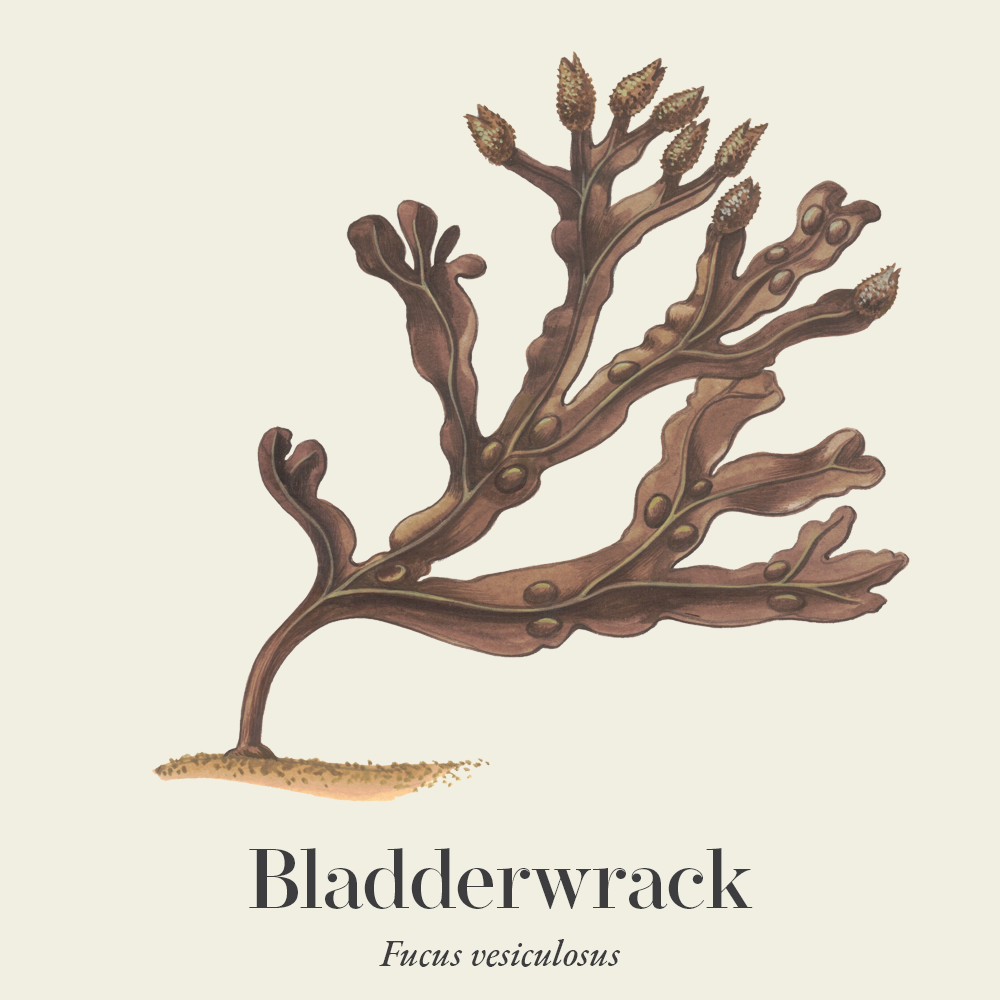
-
Habitat
Bladderwrack is found growing along the shoreline of coastal environments throughout most of the northern hemisphere. It is commonly seen along the shores surrounding the UK along with the more northern-eastern waters of the United States, the Baltic sea, the Atlantic coasts of parts of Europe and the North sea coast of Denmark and the Netherlands (3,34,36).
Although it prefers more protected areas of the shoreline, such as those found between low and high tide marks, it can tolerate moderate wave exposure and varying levels of salinity. Its natural habitat is upon the rocks and pebbles of these environments but will attach itself and grow on any solid base including artificial humankind-made structures (34,36).
-
Sustainability

Not currently on risk lists but complete data may be missing on the status of the species. Read more in our sustainability guide. Bladderwrack is not featured on the IUCN redlist or TRAFFIC and its conversation status is listed as common by other sources (36,37,38). However, in some regions it has been seen to be in decline since the 1980s in places where it had previously formed extensive belts. Studies of the south-west coast of Finland showed a reduction of bladderwrack belts from eleven to six by 2007, with populations severely declining and observed to be struggling to survive.
Along with concerns for this species itself, its loss would consequently affect the plant and seawater creature populations associated with it. Predicted changes in global climate may result in an additional impact on the environments previously seen to be abundant sources of bladderwrack (39).
Habitat loss and over-harvesting from the wild are two of the biggest threats faced by medicinal plant species. There are an increasing number of well-known herbal medicines at risk of extinction. We must, therefore, ensure that we source our medicines with sustainability in mind.
The herb supplement industry is growing at a rapid rate and until recent years a vast majority of medicinal plant produce in global trade was of unknown origin. There are some very real and urgent issues surrounding sustainability in the herb industry. These include environmental factors that affect the medicinal viability of herbs, the safety of the habitats that they are taken from, as well as the welfare of workers in the trade.
The botanical supply chain efforts for improved visibility (transparency and traceability) into verifiably sustainable production sites around the world is now certificated through the emergence of credible international voluntary sustainability standards (VSS).
Read our article on Herbal quality & safety: What to know before you buy and Sustainable sourcing of herbs to learn more about what to look for and questions to ask suppliers about sustainability.
-
Quality control
Herbal medicines are often very safe to take; however, their safety and efficacy can be jeopardised by quality issues. So, it is important to buy herbal medicines from a reputable supplier, from sources known to test their herbs to ensure there is no contamination, adulteration or substitution with incorrect plant matter, as well as ensuring that recognised marker compounds are at appropriate levels in the herbs.
Some important quality assurances to look for are certified organic labelling, the correct scientific/botanical name, and the availability of information from the supplier about ingredient origins. A supplier should be able to tell you where the herbs have come from, what contaminants are not in the herb, and what the primary compounds are.
-
How to grow
Bladderwrack can be wild harvested from clean seawater from around April onwards and throughout the summer months in the UK although in parts of the Atlantic and Pacific oceans surrounding North America the harvesting season may be longer, lasting from March through to October (2). It should only be harvested from healthy, abundant communities and the fronds cut above the point of growth.
As with the wild harvesting of any plant source, sustainable and responsible gathering is essential including harvesting only by hand, collecting less than one third of each individual plant, rotating the harvesting areas and avoiding disturbing resident wildlife, such as shore dwelling birds and other marine creatures (40). It is increasingly essential to ensure that the environment in which bladderwrack, along with any other seaweed, is being gathered is free from contaminates such as sewage, heavy metals and microplastics (41,42).
-
Recipe

Bladderwrack (Fucus vesiculosus) Seaweed pickle
This seaweed pickle makes a delicious and nutritious addition to salads and other savoury dishes.
Ingredients
- 1 cup apple cider vinegar
- 1 cup water
- 1 tablespoon salt
- 1 tablespoon sugar
- Fresh bladderwrack, best gathered in early spring
How to make seaweed pickle with bladderwrack
- Bring the liquids to the boil.
- Add salt and sugar.
- Sit until dissolved and allow to cool.
- Rinse the bladderwrack and loosely fill a pickling or Kilner jar.
- Cover with the liquid.
- Allow to sit in a cool dark place for a few weeks before use.
-
References
- A modern herbal | Bladderwrack. https://www.botanical.com/botanical/mgmh/b/bladde54.html
- An introduction to seaweed foraging – Galloway Wild Foods. https://gallowaywildfoods.com/an-introduction-to-seaweed-foraging/
- McIntyre A. The complete herbal tutor: The Definitive Guide to the Principles and Practices of Herbal Medicine – Second Edition. Aeon Books; 2019
- Thomsen M. The Phytotherapy Desk reference: 6th Edition. Aeon Books; 2022.
- Bladderwrack and hypothyroid. | Henriette’s Herbal Homepage. https://www.henriettes-herb.com/blog/bladderwrack-and-hypothyroid.html
- Mills SY, Bone K. The essential guide to herbal safety. Elsevier Health Sciences; 2004.
- Yance DR. Adaptogens in medical herbalism: Elite Herbs and Natural Compounds for Mastering Stress, Aging, and Chronic Disease. Simon and Schuster; 2013.
- Easley T, Horne S. The modern herbal Dispensatory: A Medicine-Making Guide. North Atlantic Books; 2016.
- Leiman DA, Riff BP, Morgan S, et al. Alginate therapy is effective treatment for GERD symptoms: a systematic review and meta-analysis. Diseases of the Esophagus. 2017;30(5):1-9. https://doi.org/10.1093/dote/dow020
- Hoffmann D. Medical Herbalism: The Science and Practice of Herbal Medicine. Simon and Schuster; 2003.
- Makri V. Bladder wrack- Fucus vesiculosus. (Fer)Mental Greens. Published February 27, 2023. https://fermentalgreens.com/2023/02/02/bladder-wrack-fucus-vesiculosus/
- D’Adamo P, Kelly G. Seaweeds: A Gift from the Sea. https://www.dadamo.com/txt/index.pl?1024
- Bone K. A clinical guide to blending liquid herbs: Herbal Formulations for the Individual Patient. Elsevier Health Sciences; 2003.
- Fucus Vesiculosus.—Bladder-Wrack. | Henriette’s herbal homepage. https://www.henriettes-herb.com/eclectic/kings/fucus-vesi.html
- Fucus. | Henriette’s herbal homepage. https://www.henriettes-herb.com/eclectic/felter/fucus-vesi.html
- Fisher C. Materia Medica of Western Herbs. Aeon Books; 2018.
- Hashimoto's Disease. National Institute of Diabetes and Digestive and Kidney Diseases. Published August 12, 2025. https://www.niddk.nih.gov/health-information/endocrine-diseases/hashimotos-disease#diet
- Bone K. Functional Herbal Therapy: A Modern Paradigm for Western Herbal Clinicians. Aeon Books; 2021.
- Stansbury J. Herbal Formularies for Health Professionals, Volume 3: Endocrinology, including the Adrenal and Thyroid systems, Metabolic Endocrinology and the Reproductive Systems. Chelsea Green Publishing; 2019.
- Stansbury J, Saunders P, Winston D. Promoting healthy thyroid function with iodine, bladderwrack, guggul, and iris. J Restor Med. 2012;1(1):83-90.
- Kim M, Jeon J, Lee J. Fucoidan prevents High‐Fat Diet‐Induced obesity in animals by suppression of fat accumulation. Phytotherapy Research. 2013;28(1):137-143. https://doi.org/10.1002/ptr.4965
- Negishi H, Mori M, Mori H, Yamori Y. Supplementation of Elderly Japanese Men and Women with Fucoidan from Seaweed Increases Immune Responses to Seasonal Influenza Vaccination. Journal of Nutrition. 2013;143(11):1794-1798. doi:10.3945/jn.113.179036
- Skibola CF. The effect of Fucus vesiculosus, an edible brown seaweed, upon menstrual cycle length and hormonal status in three pre-menopausal women: a case report. BMC Complementary and Alternative Medicine. 2004;4(1). https://doi.org/10.1186/1472-6882-4-10
- Zhang J, Riby JE, Conde L, Grizzle WE, Cui X, Skibola CF. A Fucus vesiculosus extract inhibits estrogen receptor activation and induces cell death in female cancer cell lines. BMC Complementary and Alternative Medicine. 2016;16(1). https://doi.org/10.1186/s12906-016-1129-6
- Deane G. Bladderwrack – Eat The Weeds and other things, too. Eat the Weeds and Other Things, Too. Published August 20, 2025. https://www.eattheweeds.com/bladderwrack/
- Seaweed Stories | Isle of Harris Distillery. Isle of Harris Distillery. Published February 11, 2022. https://harrisdistillery.com/blogs/journal/seaweed-stories?srsltid=AfmBOorrF1LnI4WCLByXfqtUpfEaDbmOZRtNLys2HaUp8mfj9pM7PcAZ
- Edwards SE, Da Costa Rocha I, Williamson EM, Heinrich M. Phytopharmacy: An Evidence-Based Guide to Herbal Medicinal Products. John Wiley & Sons; 2015.
- Committee on Herbal Medicinal Products (HMPC). Community Herbal Monograph on Fucus Vesiculosus L., Thallus.; 2013. https://www.ema.europa.eu/en/documents/herbal-monograph/draft-community-herbal-monograph-fucus-vesiculosus-l-thallus_en.pdf
- ABC Herbalgram website. https://www.herbalgram.org/resources/commission-e-monographs/monograph-unapproved-herbs/bladderwrack/
- Brinker FJ. Herb contraindications and drug interactions: With Appendices Addressing Specific Conditions and Medicines. Eclectic Medical publications ; 1998.
- TRC Healthcare. NatMed Pro – NatMed Pro. https://naturalmedicines.therapeuticresearch.com/Home/ND?referer=natlinstituteofmedicalherbalists%2fintranet.url
- Rodrigues M, Alves G, Abrantes J, Falcão A. Herb–drug interaction of Fucus vesiculosus extract and amiodarone in rats: A potential risk for reduced bioavailability of amiodarone in clinical practice. Food and Chemical Toxicology. 2012;52:121-128. https://doi.org/10.1016/j.fct.2012.11.012
- Catarino MD, Silva AMS, Cardoso SM. Phycochemical Constituents and Biological Activities of Fucus spp. Marine Drugs. 2018;16(8):249. doi:10.3390/md16080249
- Bladder wrack (Fucus vesiculosus) – MarLIN – The Marine Life Information Network. https://www.marlin.ac.uk/species/detail/1330#:~:text=Plants%20are%20dioecious.,periods%20experienced%20similar%20recruitment%20success
- Seaweed.ie :: Fucus. https://www.seaweed.ie/algae/fucus.php#:~:text=Fucus%20is%20northern%2Dhemisphere%20genus,a%20number%20of%20useful%20compounds
- Bladder wrack | The Wildlife Trusts. https://www.wildlifetrusts.org/wildlife-explorer/marine/seaweeds-and-seagrass/bladder-wrack#:~:text=%C2%A9Kirsten%20Smith-,Bladder%20wrack,that%20give%20it%20its%20name
- The IUCN red list of threatened species. IUCN Red List of Threatened Species. https://www.iucnredlist.org/search?query=bladderwrack&searchType=species
- TRAFFIC International. https://www.traffic.org/search/?q=fucus
- Vahteri P, Vuorinen I, Archipelago Research Institute, FI-20014 University of Turku, Finland. Continued Decline of the Bladderwrack, Fucus Vesiculosus, in the Archipelago Sea, Northern Baltic Proper. Vol 21.; 2016:373-386. https://www.utupub.fi/bitstream/handle/10024/156010/ber21-373.pdf?sequence=1
- Seaweed Harvesting Code of Conduct, Natural England. https://www.cornwallgoodseafoodguide.org.uk/how-to-guides/seaweed-harvesting-code-of-conduct.php
- Ravi H, Sandhya K, Sunil CK, Natarajan V. Seaweed as a sink for microplastic contamination: uptake, identifications and food safety implications. Environmental Research. Published online April 1, 2025:121631. https://doi.org/10.1016/j.envres.2025.121631
- Giusti L. Heavy metal contamination of brown seaweed and sediments from the UK coastline between the Wear river and the Tees river. Environment International. 2001;26(4):275-286. https://doi.org/10.1016/s0160-4120(00)00117-3

